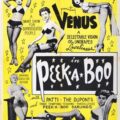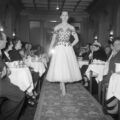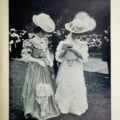Womens fashion 1915 – War Fashion
May 18, 2016At the beginning of 1915 jobs available to women both by societal pressures and actual law were few: they included secretarial work, shop assistance, domestic service, teaching, sewing, and factory work. Most of these jobs were for the working class, who were still often required to be wives and mothers in addition. But primarily women were expected to be domestic helpmeets only, and once married to leave your job to tend to your husband and family. This was briskly reversed as war broke out, and government propaganda set out to seduce women into doing their bit. Womens fashion 1915 meant for many not dainty tea dresses but a uniform for work.
War Fashion
Now it was women of all classes who found themselves cooking for the troops, training as dentists, driving vehicles, and becoming piano tuners and bakers. They also became post women and milk women, jobs which today seem quite innocuous. But the idea of young women walking around alone, un-chaperoned, was shocking to some and there was the entirely impractical suggestion in some newspaper’s letter’s pages that men should be rustled up to accompany the women, if they must do the job; thus rendering the whole thing pointless. Of course these suggestions were ignored and for the duration of the war women continued in these posts, enjoying the fresh air and freedom.
Womens fashion 1915 – smart uniforms
They also became bus and tram conductresses, grooms and game keepers, train guards and lift attendants. For these jobs women were fitted out in wonderful uniforms which usually incorporated a fitted jacket (fairly minimal and streamlined fitted jackets were a fashion norm for Edwardian women anyway), plain neat skirt and a cap, but sometimes the uniforms consisted of the jacket over knickerbockers or trousers, with knee high leather boots.
Women were immensely proud of their work and their uniforms, though especially in the first months of war they were objects of curiosity at the very least and ridicule at worst. Only a few women, like Mairie Chisholm and Elsie Knocker, the famous nurses who spent most of their time in motorbiking leathers were actually celebrated for such dashing attire. Their uniforms, including trousers, influenced womens fashion 1915 at home in Britain, and paved the way for the more relaxed and comfortable fashions to come.
Womens fashion 1915 – policewomen
Women police officers were initially employed to keep an eye on women who worked in factories, making sure they didn’t hang around the factory gates or bring flammable items to work. But soon their remit expanded to keeping an eye on the public at large and walking the beat.
Womens fashion 1915 – dustmen and farm girls
But if these jobs were considered unfeminine because the women were placed in a position of authority over the public or working machinery like lifts, there were other jobs which were required working much heavier machinery, and doing very dirty, physical work.
Not only did female dustmen now exist, collecting refuse, but gangs of women were employed to work on the land, and these was not the gaily skipping land girls who were pictured working on farms in the clean country air for World War Two, but women doing grim, back breaking jobs sorting potatoes in vast, dim sheds or harrowing wheat by hand.
Womens fashion 1915 – Muntionettes
Women also worked in gangs cleaning trains, working in ship yards, factories of all kinds and above all, in newly constructed or hastily expanded weapons factories. By 1918 almost a million women were employed in some type of munitions work.
womens fashion 1915 – unequal pay
Such is the propaganda of both world wars in Britain that I was vaguely surprised to find out that soldiers in both wars were paid for serving king and country: I had always assumed they went into it for sheer patriotism, or unwillingly conscripted – the idea that they were remunerated never occurred to me. And it’s the same for women’s war work – though volunteering was encouraged though the VAD (Voluntary Aid Detachment), an organisation which recruited and trained primarily nurses, but also housekeepers, maids and cooks, work in most sectors was paid. Of course, male soldiers still needed to pay mortgages or rent for families at home, and those at home needed to eat and clothes themselves. Most could not afford to volunteer, which is why the VADs were heavily weighted towards to the middle and upper classes, who didn’t need every penny, and wanted to help the war effort.
The women in new positions were keen to help the war effort too, and they came from all classes. But the shocker is this – although many of these positions were newly taken up by women and there had been no pay precedence beforehand (the division of jobs along gender lines being fairly rigid, ie a housekeeper could never be a male, or a butler a female, therefore questions of equal pay for exactly the same job rarely arose, although in comparable jobs men were paid more) – right from the beginning women in these jobs were paid only two third, or even half, of those that the men who worked alongside them on the exact same jobs were paid. It seems as though this was the point where wages could have been set by the very government which encouraged the women into work in the first place, but right there and then they nipped pay inequality in the bud.
Womens fashion 1915 – huge factories
Also, in my naivety, I was shocked to find out that the owners of the factories were out for as large a profit as possible. Many factories were converted from producing peace time goods to making armaments and many new factories were set up, but it was done on the cheap.
Not only was the new female workforce paid less, but conditions were found to be unsanitary, with too few toilets and washrooms in many cases, and machinery poorly set up and dangerous. However, there were independent factory inspectors (many of them female) who were able to make enforceable recommendations for improvements.
In addition to this, many factories, which were huge complexes that included canteens, uniform making workrooms and rest areas, also had free creches to look after younger children, as the mothers would have been unable to come to work without this service. The government also part funded over 100 nurseries, but they were just for the munitions workers.
Womens fashion 1915 – dangerous war work
Munitionettes, though paid less than the men in the same jobs, were relatively well paid for factory workers but faced great danger. During the war more than 200 female factory workers died from accidents, explosions or the effect of the chemicals they worked with. Not only was machinery they worked with dangerous, but the ingredients of the bombs they were making were poisonous.
Trinitrotoluene (TNT) is toxic, and repeated exposure to it not only caused the workers severe health problems, but turned their skins yellow, in a condition called toxic jaundice leading to the nickname “canary girls”. ‘Everything that that powder touches goes yellow. All the girls’ faces were yellow, all round their mouths. They had their own canteen, in which everything was yellow that they touched… Everything they touched went yellow – chairs, tables, everything.’ recalled Ethel Dean, a factory worker who worked alongside them. They also gave birth to yellow babies, although the colour faded as the children grew.
Other women who worked constantly with acid found that not only did the splashes burn their skin in permanent freckles of scars but the smell permeated their beings: one woman recounted with sorrow how when she got home from a day’s work her young children rejected her because they said she “smelled just like pee”.
No jewellery
Munitions workers could wear no jewellery whilst working as any sparks from metal could cause an explosion leading to the loss of thousands of lives. Wedding rings were allowed, but only if completely covered by thread. Besides the danger of sparks, jewellery could catch on machinery.
Womens fashion 1915 – plain uniforms for safety
Uniforms for Munitionettes were usually produced in workshops within the factories they worked in. Uniforms for workers of all types depended on the work they were doing, whether indoor or outdoor, in the hot or cold, or handling dangerous substances.
Type A was essentially a boiler suit, and all in one overall which covered from neck to wrists to ankles. Type B was a trouser suit with a long tunic on top. Sometimes instead of straight trousers, knickerbockers (known as knickers) were worn. Care was taken that the design of garments was as plain and simple as possible, with well stitched belts and inset pockets instead of ones with flaps. Anything that could catch on machinery was out.
Womens fashion 1915 – flowers and ribbons
But women still added feminine touches to these plain outfits. Even though Parisian womens fashion 1915 was out, blouses were worn underneath with lacy collars, and the plain circle of fabric with a drawstring worn on the head to protect the hair (a mobcap) could be in any colour, and was sometimes prettily ruched. Some workers substituted brightly printed handkerchiefs for the mob caps.
At Woolwich Arsenal, a fashion for pinning flower posies to the front of uniform began, and each workshop division soon had their own flower emblem. When this was banned, they switched to coloured ribbons instead. Some girls even tied flowers to their machines in spring, just for one day before that too was banned.
Womens fashion 1915 – protective accessories
But a factory visitor, L.K. Yates who in 1915 described the women in a positive rainbow of colours, from khaki to outfits made from the Union Jack, via “the daintiest shades of pink, blue, white and heliotrope” must surely have been exaggerating, as however pretty heliotrope is it isn’t practical, and most diary accounts record the colours of khaki, bottle green, brown or blue, although they all faded down to the same non-colour in the end. In fact, women in sturdy but down at heel boots with string for laces, and so many holes in their overalls they looked like a bundle of rags, hitched up with twine was more the norm in some factories.
These could be supplemented by huge oilskin aprons, protective gloves, veils, masks with breathing tubes, and wooden soled clogs to protect the feet.
A brief camaraderie
Despite the danger and the lack of fashion opportunity the sometimes boring, sometimes difficult and sometimes monotonous work was still relished by the women, for the money, the camaraderie and patriotic pride.
But after the war it was made clear to these women that while their contributions were appreciated by the nation, they were merely placeholders for the men. The government had specifically negotiated with the trade unions before the whole thing started that this would be the case.The munitions factories, no longer needed, quickly closed down or went back to the pre-war produce, the nurseries closed, and the men who came home took their old jobs back.
Miss Fletcher, an administrator with the Voluntary Aid Detachments, in her office at the Hotel Christol, Boulogne by Christina Broom









